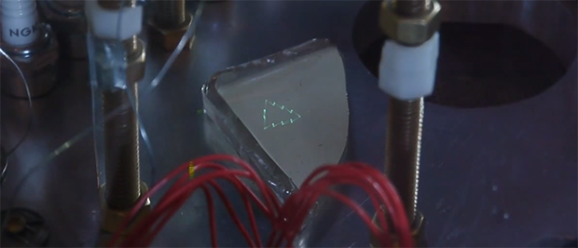
A few years ago [Ben Krasnow] built a scanning electron microscope from a few parts he had sitting around. He’s done a few overviews of how he built his SEM, but now he’s put up a great video on how to control electrons, focus them into a point, and scan a sample.
The basic idea behind a scanning electron microscope is to shoot electrons down a tube, focus them into a point, and scan a conductive sample and detect the secondary electrons shot off the sample and display them on an oscilloscope. [Ben] is generating electrons with a small tungsten filament at the top of his electron ‘stack’. Being like charged, these electrons naturally fan out, so a good bit of electron optics are required to get a small point.
Focusing is done through a series of pinholes and electrostatic deflectors, much like you’d see in an old oscilloscope CRT. In the video, you can see [Ben] shooting electrons and displaying a Christmas tree graphic onto a piece of phosphor-coated glass. He has a pretty big scanning area in his SEM, more than enough to look at a few chips, wafers, and whatever other crazy stuff is coming out of [Ben]’s lab.
Video below, along with the three-year-old overview of the entire microscope.
Continue reading “Electron Beam Control In A Scanning Electron Microscope”












